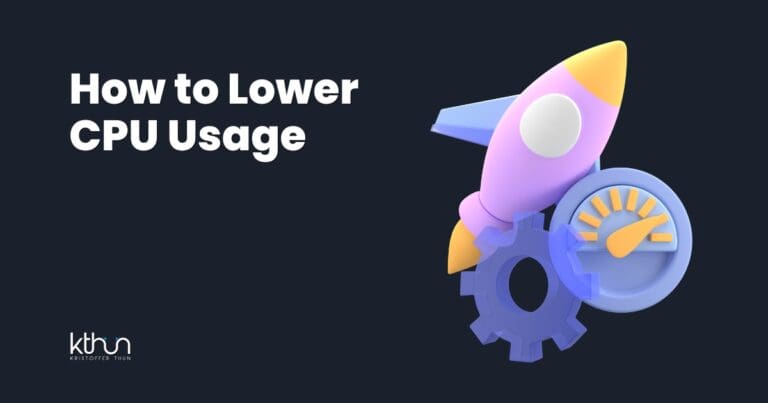Are you tired of seeing the quality of your videos plummet every time you share them?
It’s a common frustration; you’re certainly not alone in this.
Sadly, popular platforms like Messenger and WhatsApp often reduce video quality significantly.
It’s a bummer, isn’t it?
But here’s the good news: there are better ways to share your videos without losing that crisp, high-quality feel.
In this guide, I’ll share five methods that ensure your videos remain top-notch when shared. Because your creations deserve to be seen in the best light, don’t they?
Reasons Why You Should Share Your Videos Without Losing Quality
Knowing how to share videos without losing quality is crucial for several reasons:
- To maintain the integrity of your work: If you’ve put time and effort into creating a high-quality video, you don’t want to lose that quality when sharing it with others.
- To make a good impression: Whether you’re sharing a video with friends or clients, the quality of the video reflects on you. Communicating a clear, high-quality video can make a more professional and polished impression.
- To avoid frustration: It can be frustrating for you and the person you share the video with if it is blurry or distorted. By sharing a high-quality video, you can avoid any unnecessary frustration.
Benefits of Sending High-Quality Videos
To provide the best viewing experience, it’s important to send video files in the highest resolution possible. Whether it’s a funny family moment or a business video, ensuring high-quality playback is crucial.
Quality video content looks and sounds better and impacts engagement, image, and brand reputation.
Three benefits of sending high-quality videos:
- It shows that you care about the recipient and want to put in the extra effort to make sure they experience the video in the best possible way.
- High-quality videos are more likely to be watched all the way through, resulting in better engagement with your content.
- They create a more favorable impression of your brand or company, making people more likely to do business with you.
How to Send Videos Without Losing Quality
Method 1 – Video-sharing platform

Sharing quality videos and sending them to the world has never been easier! With platforms like YouTube and Vimeo, you don’t need to worry about losing quality when sending your videos.
Both these platforms allow you to upload your creations, providing viewers with a seamless streaming experience that preserves that HD crispness. You can make your videos private and unlisted or share them publicly. It’s up to you!
Method 2 – Use a File Hosting Service

With file-sharing services, you can share links to high-quality videos without losing quality – it’s effortless.
You only need a file-sharing service like MediaFire, Google Drive, iCloud, or Dropbox! You can quickly and easily upload your high-quality videos to the cloud by following the step-by-step instructions on the respective site.
These websites simplify transporting your videos worldwide and keeping them in pristine condition. No more worrying about grainy footage or distorted sound – download and enjoy!
Sharing videos ensures their vibrant colors and crystal-clear audio will remain intact.
Method 3 – Use a File Transfer Service

Sending videos via email without losing quality is easier than ever to send high-quality videos without sacrificing quality. The recipient’s email address should be all you need to complete the job!
Services like WeTransfer make transferring videos simple.
Whether it’s a family video, an instructional clip, or a personal project you’re proud of, sending videos via email is an easy and effective way to share your content without stress or strain.
And with today’s growing capacity for data storage and transfer speeds, there’s no need to worry about those long loading periods or poor playback quality – enter the recipient’s email address and hit send!
Method 4 – Cloud Storage Services

Making and sharing high-quality videos doesn’t have to be a challenge.
Several excellent cloud storage services, like Google Photos, OneDrive, and iCloud, store your video files/files in their original format without losing video quality, making it easy to share them.
Everyone can view your amazing footage without the pixelation or other effects of a poor-quality transfer. These cloud storage options allow you to easily share, stream, and view your videos over multiple devices.
Plus, it helps keep your hard drive from filling up since it streams directly from the cloud. Whether creating content for yourself or trying to impress friends and family, pushing quality footage into the world has never been easier!
Method 5 – Use a Video Messaging App
You can now share your favorite high-quality videos without sacrificing their superior quality!
With the right video messaging app, you can easily connect with friends and family in real-time to enjoy those cherished videos.
Whether using Skype, Zoom, or another platform, you don’t have to worry about pixelating videos or losing resolution.
Important Considerations When Sharing Your Videos
There are a few key considerations to keep in mind when sharing your videos without losing quality:
- Check the file size: If you’re sharing a large video file, it may take longer to upload or download, and the quality may suffer. Use video compression software or consider splitting the video into smaller chunks if necessary.
- Test the method: Before sharing your video with others, it’s a good idea to test your way to ensure the quality is maintained. This will allow you to troubleshoot any issues before it’s too late.
- Consider the audience: If you’re sharing a video with a large group, you may want to use a method that allows multiple people to access the video simultaneously, such as a video-sharing platform(YouTube) or file-hosting service.
Alternatives to Sharing Your Videos Without Losing Quality
If you’re struggling to share your videos without losing quality, here are a few alternatives you can try:
- Use screen recording software: If you’re trying to share a video only available online, you can use screen recording software such as OBS or Camtasia to capture and share the video with others. This will allow you to maintain the quality of the original video.
- Use video conversion software: If you’re having trouble sharing a video because it’s in a format that isn’t supported by the method you’re using, you can use video conversion software such as HandBrake or FFmpeg to convert the video to a different format. This can often solve issues with compatibility.
- Use a video transcoding service: If you’re still having trouble sharing your videos, you can use a video transcoding service such as Zencoder or AWS Elemental MediaConvert to convert your videos to an optimized format for sharing. These services can often improve the quality of your videos and make them easier to share.
In Conclusion
Effortlessly share high-quality videos with file-sharing services, video-sharing platforms, or compression software. My preferred option is Google Drive and Google Photos.
It’s just to be sure which way is a good fit for you before sharing your video with others, and consider the size of the file and the audience you’re sharing with. Planning and preparation allow you to confidently share your videos without sacrificing quality.
FAQs
Does iMessage compress video files?
Yes, iMessage does compress video files. However, the compression is so effective that most people can’t tell the difference in quality between a compressed and uncompressed video. Apple has even said the compression is so good that it’s ” indistinguishable from the source material.”
Does Telegram compress photos?
Yep, Telegram does compress photos. But it’s a good kind of compression that doesn’t destroy all the details in your shots.
How do I email a video that is too large?
Most email servers will reject a too-large video, so you’ll need to use a file-sharing service like Dropbox, Wetransfer, or Google Drive. Just upload the video to their site and send the link to your email. Problem solved!
How do I send a lossless video?
Lossless video compression is a process of encoding video so that the output file size is reduced without any loss in quality.
There are many different ways to achieve lossless compression, but the most popular technique is Huffman coding. This approach assigns shorter codes to the most commonly used symbols, which results in a smaller file size.
Many lossless video codecs are also available, each with advantages and disadvantages. Some of the most popular codecs include HuffYUV, FFV1, and Lagarith.
When choosing a codec, it’s important to consider the type of footage you’re encoding and the level of compression you need. Some codecs are more suitable for comp.
How can I send a video on WhatsApp without losing quality?
There is a way you can send them- by using the “Document option”. WhatsApp doesn’t compress or reduce the quality of videos or photos when you send them as a document.






